SRA Legume Agronomy workshop summary – Burdekin
Pulse Check's summary notes by Cindy Benjamin
In late October, Pulse Check participated in a series of shed meeting hosted by Sugar Research Australia (SRA) under the SRA Soil Health program. Below is a summary of the key points from each of the speakers.
Legume agronomy – Brent Wilson, Landmark
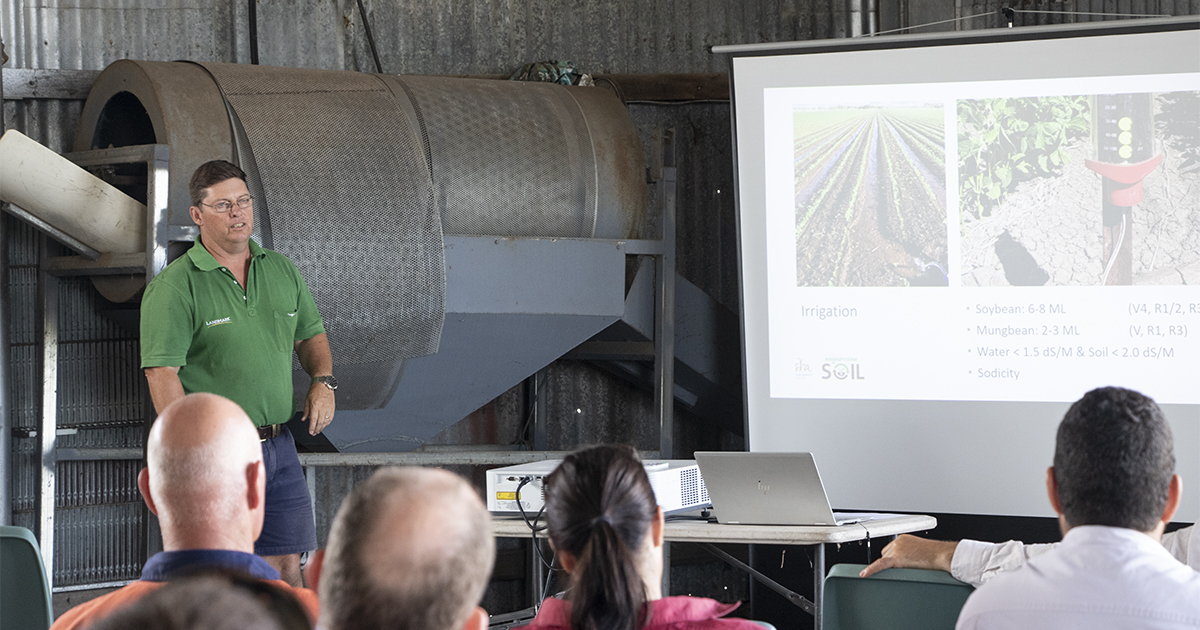
- Don't skimp on inoculant. A triple-rate of inoculant costs $16/ha compared to $326/ha if you were to supply the N required to grow the crop.
- Apply required fertiliser – legumes can fix N but not any of the other nutrients they require.
- Have harvesting in mind when you prepare the seedbed – the bed has to be flat to allow the harvester to pick up pods set close to the ground.
- Test for nematodes and consider the crop's tolerance, susceptibility or resistance.
- Establishment – easy for mungbeans, soybeans need more attention to detail. For soybeans, plant into moisture. Plant at 30 mm depth and no pressure on the press-wheels.
- Don't keep soybean seed unless you have cold storage available.
- Irrigating soybeans: Soybeans require 6 to 8 ML/ha and watering must be kept up until the crop is mature. Apply at V4, R1/2 and R3/4.
- Irrigating mungbeans: Mungbeans require 2 to 3 ML/ha and watering should cease earlier. Apply at V, R1 and R3 growth stages.
- Insecticides: no prophylactic spraying. Check crops early and frequently, and follow economic thresholds for spraying to protect growing points.
- Mungbeans are best suited to planting in late February or later, to avoid difficulties with managing the crop in the wet season.
- Soybeans can handle being submerged for a few days provided the crop is a little advanced.
Soil health – Neil Halpin, DAF
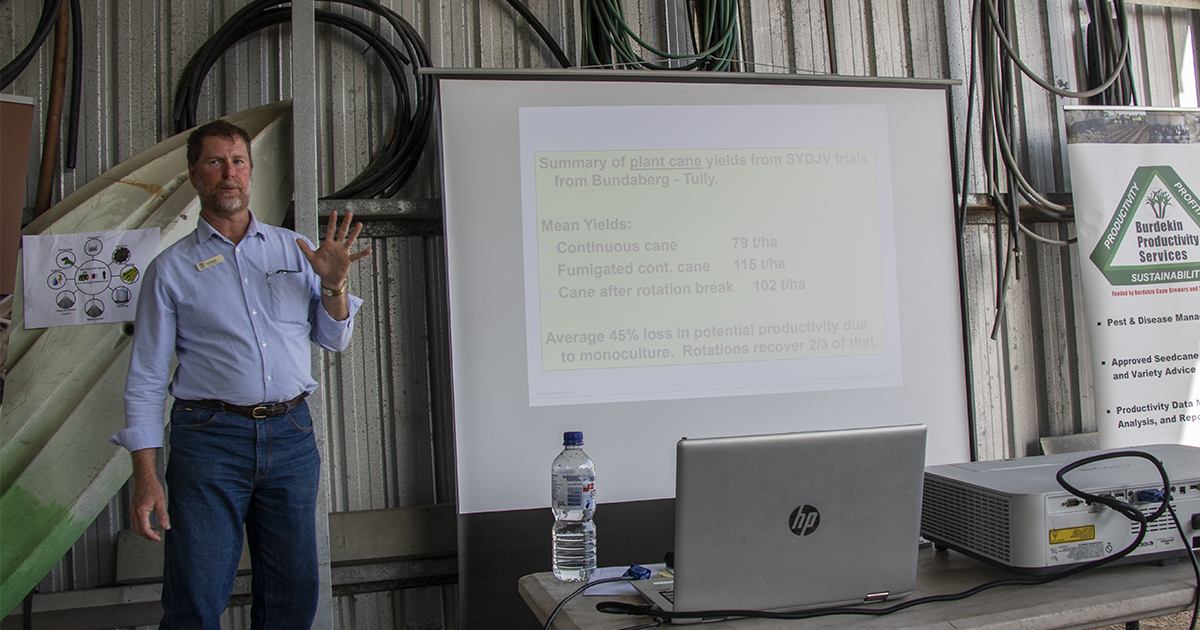
- Legumes are one of the pillars of a sustainable sugarcane farming system – clearly demonstrated in the Sugar Yield Decline Joint Venture (SYDJV) research. This research showed that sugarcane monoculture results in an average 45% yield loss. Two-thirds of that loss is recovered when a legume is grown in rotation with cane.
- The yield benefit in sugarcane after the legume is at least 20% from plant cane to third ratoon. To achieve this the legume must be well-grown!
- Why does it work? Legumes restore the balance in soil microbial populations – boosting the beneficials to overwhelm the effect of soil pathogens.
- For the system to work best you need as many pillars in place as possible – legume rotation crops, controlled traffic, trash retention and minimum tillage.
Steps to a well-grown legume crop
- Start with a soil test and correct the pH as necessary.
- Get inoculation right and apply the required nutrients (especially zinc and molybdenum). Applying these nutrients at planting should be sufficient for the crop.
- Think about what you want to achieve with the legume – success might be in $/ha, or residual nitrogen, or nematode management or cane yield or $/ML and so on.
Foundation blocks of soil health are:
- Crop rotation – including legumes
- Retaining crop residues – build organic reserves
- Minimum tillage – minimise disturbance
- Controlled traffic – reduce compaction
When these foundation blocks are in place, soils are able to build and maintain populations of beneficial micro-organisms. Yield losses to pathogens such as plant parasitic nematodes are reduced, nutrients are available from organic and inorganic sources and crop roots are able to explore more of the soil profile to access moisture and nutrients.
These foundation blocks were clearly identified and quantified through research conducted during the Sugar Yield Decline Joint Venture.
Proper use of crop protection products – Paul McIntosh, Pulse Australia
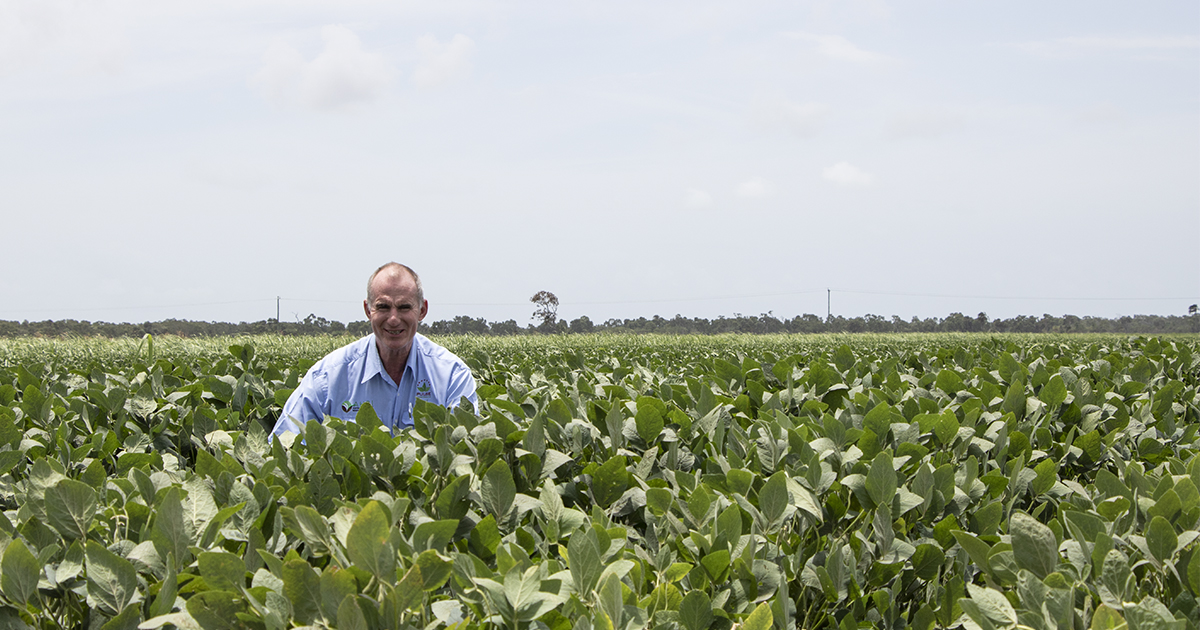
- Crop protection products play an important role in protecting grain quality in pulse crops. Visual appeal is highly valued in pulse grain markets.
- Export markets have very strict limits on chemical residue on grain and this relates directly to chemical application decisions on farm.
- Over-use of chemicals is the main driver of resistance in weeds, insects and fungal diseases. Chemicals must be used within an integrated program that includes non-chemical tactics and rotation of active ingredients.
More information: Pulse crop protection in coastal farming systems
Economic analysis of rotation crop options – Caleb Connolly, DAF
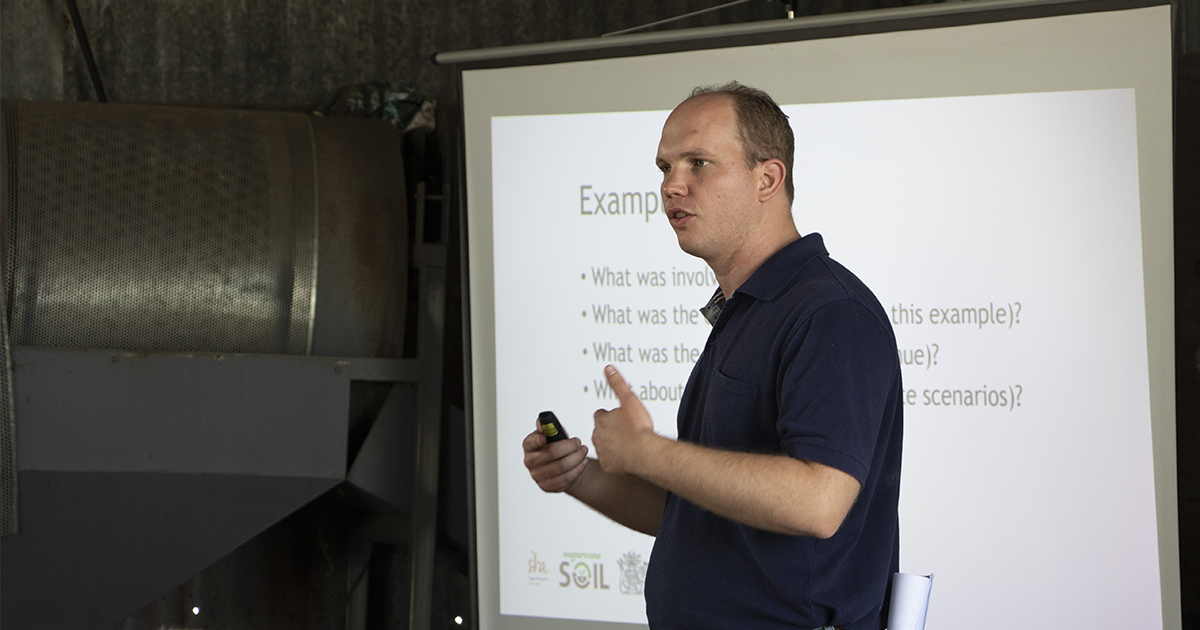
- The Farm Economic Analysis Tool (FEAT) is freely available to canegrowers wanting to test the economic outcome of growing legume rotational crops.
- You can test different scenarios using your own figures and farm data.
- Consider factoring in the potential land preparation costs and nitrogen or weed control benefits from the legume across the whole farming system.
- Keep in mind that a bare fallow also involves expenditure (but no potential income).
More information: Farm Economic Analysis Tool (FEAT)
Pulse storage – Brock Dembowski, DAF
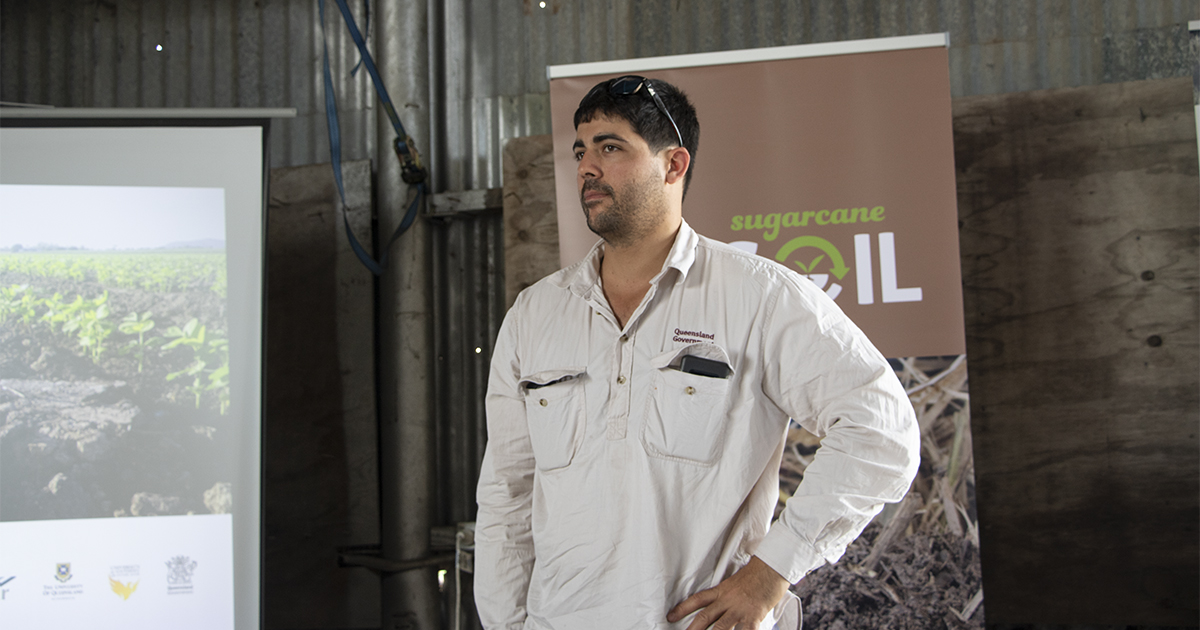
- Pulse storage can be a worthwhile investment if done correctly.
- Automatic coolers should be considered as a high priority.
- Keeping the grain clean and cool is essential. Each degree below 25 degrees C reduces insect activity.
- Silos must be sealable to use fumigants.
More information: Stored Grain information hub
Grower comments
Experienced pulse growers Paul Villis, Willie Lucas, Cy Kovocich and Andrew Cross each provided a summary of their own farming system and the way pulse crops work for them.
Read Pulse Check blog articles | Pulse Check Coastal facebook | Subscribe to the monthly newsletter

